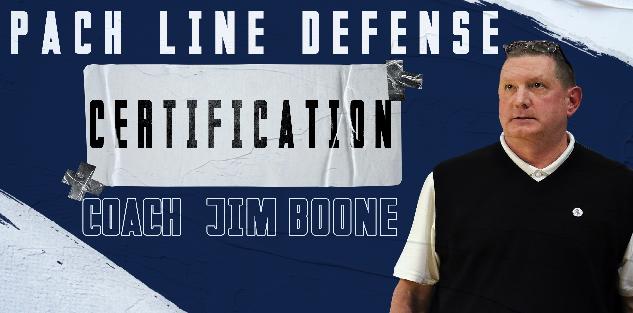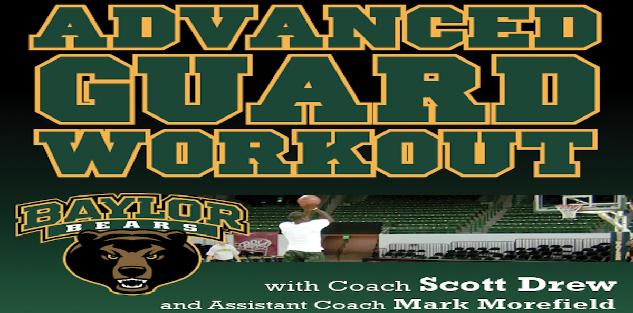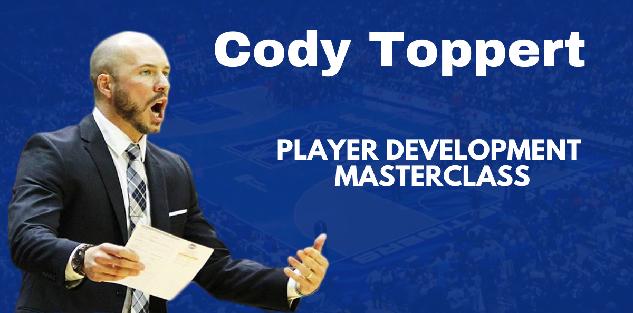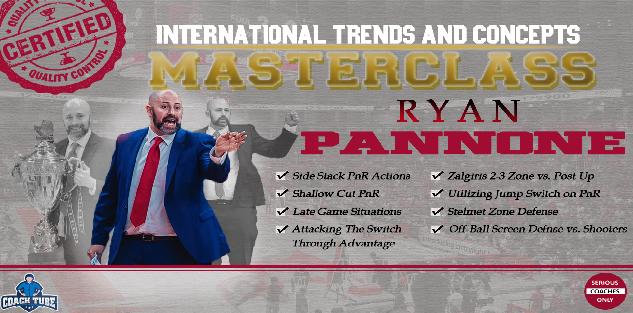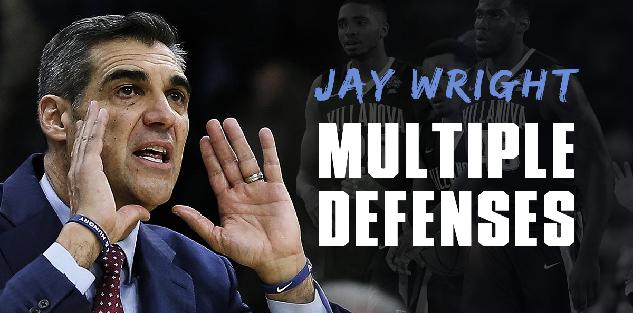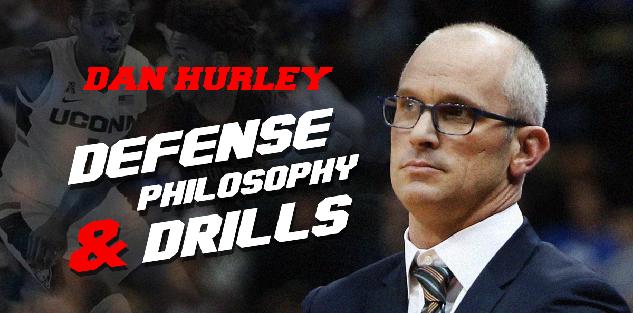Featured courses
- Two Great Game Situational Workouts For the Basketball Offseason by Grant Young
- Two Reads Basketball Players Must Understand Before Executing the Ball-Screen by Grant Young
- Two of LSU Coach Kim Mulkey’s Game-Winning Inbounds Plays by Grant Young
- Three Effective Early-Season Defensive Basketball Drills by Grant Young
- Four Essential Tips For Basketball’s 1-3-1 Zone Defense by Grant Young
- Four Zone Defense Drills to Strengthen Your Team by Grant Young
- How to Beat the Three Most Common Pick and Roll Coverages by Grant Young
- Two Drills to Improve Shooting at the Start of the Basketball Season by Grant Young
- Core Basketball Principles That Dallas Mavericks Coach Sean Sweeney Teaches by Grant Young
- Three Competitive Shooting Drills For Your Basketball Team by Grant Young
- How To Teach The ‘I’ Generation of Basketball Players by Grant Young
- Three Elite Drills to Begin a Basketball Practice With by Grant Young
- How to Build a Championship-Winning Basketball Team Culture by Grant Young
- Two of Texas Women’s Basketball Coach Vic Schaefer’s Tips For Team Culture by Grant Young
- Atlanta Dream WNBA Coach Brandi Poole’s Four Sets for Secondary Offense by Grant Young
- NC State Basketball Coach Brett Nelson’s 4 Crucial Point Guard Qualities by Grant Young
- Kentucky Coach Mark Pope’s Five Guard Rules For Offense by Grant Young
- McNeese State Basketball Coach Will Wade’s 4 Core Pillars by Grant Young
- 4 Tips To Instantly Improve Your Free Throw Shooting by Tyler Linderman
- Assemble a Championship-Caliber Basketball Rotation by Brandon Ogle
- Two of UConn Coach Dan Hurley’s Key Defensive Drills by Grant Young
- Four Post Moves All Basketball Forwards Should Have In Their Bag by Grant Young
- Four of Baylor Coach Nicki Collen’s Midseason Pick and Roll Adjustments by Grant Young
- WNBA Legend Sue Bird’s Two Tips For Attacking on Offense by Grant Young
- Houston Coach Kelvin Sampson’s Three Keys for Building a Basketball Program by Grant Young
- Two of Tom Izzo’s Top Michigan State Defensive Drills by Grant Young
- Four of Olympic Gold Medalist Coach Mechelle Freeman’s Relay Race Strategies by Grant Young
- Three Key Strategies Will Wade Uses to Build a Dominant Team by William Markey
- Five UConn Huskies Men’s Basketball Plays That You Can Use by Grant Young
- Three Tips for Maintaining Team Culture at the End of a Basketball Season by Grant Young
- Three Dribble Drive Motion Drills to Teach Your Basketball Team by Grant Young
- Three Dribbling Drills For Non-Primary Ball Handlers by Grant Young
- Four Advanced Ball Handling Drills For Basketball Guards by Grant Young
- Three Tips to Sharpen Your Post Player’s Footwork in Basketball by Grant Young
- These Three Pick and Roll Drills Are Crucial For Any Ball Screen Offense by Grant Young
- Three Closeout Drills to Improve Basketball Shooting Defense by Grant Young
- Three Tips to Perfect the Packline Defense in Basketball by Grant Young
- Four Keys to Executing the Read and React Offense in Basketball by Grant Young
- Three Tips to Develop Elite Basketball Shooters by Grant Young
- Three Crucial Keys to Executing the 5 Out Offense in Basketball by Grant Young
- These Three Offensive Sets Will Help You Beat Any Zone Defense by Grant Young
- Three Transition Basketball Drills To Play With More Pace by Grant Young
- Three 5 Out Offense Drills Any Basketball Coach Can Use by Grant Young
- Four Vital Techniques for a Motion Offense in Basketball by Grant Young
- Three Baseline Inbounds Plays To Win Your Basketball Team Games by Grant Young
- Four Drills For Sharpening the European Ball Screen Offense by Grant Young
- Three Positioning Tricks For a Basketball Zone Offense by Grant Young
- Three Rules to Perfecting Basketball's Lock Left Defensive System by Grant Young
- UCLA WBB Coach Cori Close’s Two Keys to Winning the Mental Game by Grant Young
- Four of Alabama Coach Nate Oats’ Favorite Basketball Drills by Grant Young
- Three Ways To Turn Transition Offense in Basketball Into Points by Grant Young
- Three Drills to Master Basketball's Pack Line Defense by Grant Young
- Three Transition Defense Drills to Halt Fast Breaks by Grant Young
- Four Offensive Rebounding Drills to Win Second Possessions by Grant Young
- 4 Defensive Technique Drills from Boston Celtics Assistant Coach Brandon Bailey by Marek Hulva
- 5 Drills to Improve Ball Handling by Tyler Linderman
- 13 FUNNY BASKETBALL GIFS by Alex
- BASKETBALL SPEED AND AGILITY: 8 QUESTIONS FOR COACHTUBE EXPERT RICH STONER by Jaycob Ammerman
- Defensive Strategies for Basketball by Ryan Brennan
- 4 Keys To Turning Your Program Into Championship Contender By Dallas Mavericks Coach Sean Sweeney by Marek Hulva
- 5 Components to Creating a Winning Basketball Program by Justin Tran
- Guide to Becoming a Lethal Scorer in Basketball by Justin Tran
- Zone Defense In the NBA Eastern Conference Finals by James Locke
- Mastering Court Mobility: Tips for Effective Movement in Basketball by Justin Tran
- 5 Basketball Shooting Drills: How to Develop a Sharpshooter by James Locke
- 6 Points of Emphasis for a Successful 5 Out Offense by Jaycob Ammerman
- Effective and Efficient Methods to Practice During the Basketball Season by Justin Tran
- Three Great Passing Drills From a Basketball Coaching Legend by Grant Young
- 7 Principles For Perfecting the Princeton Offense in Basketball by Grant Young
- How to Replicate A Modern NBA Offense by Grant Young
- Three Great Two-Ball Dribbling Drills For Basketball Development by Grant Young
- Two Rebounding Drills to Win Your Basketball Team Championships by Grant Young
- How to Improve Your Basketball Team’s Defense With the Shell Drill by Grant Young
- How Baylor Basketball’s Scott Drew Develops Elite Guard Play by Grant Young
- Off-Ball Movement Tips and Strategies: Lessons From the NBA Finals by James Locke
- Player Development: Scott Drew’s Tips for Producing NBA Guards by James Locke
- How to Execute a Spread Offense in Basketball by Grant Young
- Four Quality Quotes From Four Final Four Coaches by Grant Young
- A Guide to the Pack Line Defense by Alex Martinez
- 3 Defensive Build Up Drills to Improve Team Basketball Defense by Grant Young
- Battle of Two Great Coaches: Best Plays from the NBA Finals Contenders by Justin Tran
- 10 Creative Ways Athletic Programs Can Use a Video Board to Raise Money by Coach Williams
- How to Use 3 on 3 to Improve Your Basketball Team by Grant Young
- How to Defend the Pick and Roll by Grant Young
- Mastering Basketball Defense: Techniques, Drills, and Strategies for Success by Justin Tran
- Three Tips From The Coach Who Developed Giannis Antetokoumnpo by Grant Young
- 2023 NBA Draft: Skills and Technique from Top Prospects by Justin Tran
- From College to the Pros: Transitioning the Dribble Drive Offense by Justin Tran
- Positionless Basketball: Redefining Roles on the Court by Justin Tran
- Revolutionize Your Offense: Proven Concepts to Elevate Your Basketball Game by Justin Tran
- 5 Essential Fastbreak Drills Every Basketball Coach Should Know by James Locke
- How to Run a Circle Offense in Basketball by Grant Young
- Game-Changing Strategies: ATO Plays in the EuroLeague and Olympics by Justin Tran
- How to Stand Out at Basketball Tryouts by Grant Young
- How to Improve Your Basketball Team’s Transition Defense by Grant Young
- Indiana Fever GM Lin Dunn’s Two Keys For Women’s Basketball Coaches by Grant Young
- Strength Training Strategies Every Basketball Player Should Have by Grant Young
- A WNBA Basketball Coach’s Four Priorities In Transition Defense by Grant Young
- Three Adjustments to Make When Your Basketball Offense Isn’t Working by Grant Young
- Three Pillars to Applying Defensive Pressure on the Basketball Court by Grant Young

Pat Summitt’s Top Tips on Coaching Women’s Basketball
- By Grant Young
Women's basketball has never been better than it is right now.
The Caitlin Clark Effect is in full swing, Angel Reese has become a global phenomenon, and the WNBA’s entire 2024 rookie class is packed with superstars who are bringing unprecedented levels of attention to the league.
And we can’t forget about the league’s veteran superstars, either. Players like Breanna Stewart, A’ja Wilson, and Diana Taurasi have been holding the torch for years, and the wider sports world is just starting to catch on to how incredible these basketball players are.
But these fantastic females wouldn’t have gotten to where they are today without coaches like Pat Summitt (and her women's basketball training) to guide them.
Coach Pat Summitt is the former University of Tennessee head women's college basketball coach. During her career coaching the Lady Vols from 1974 to 2012, she lead the team to eight NCAA championships. Coach Summitt was the first NCAA coach to achieve 1,000 victories, and in 2009, the Sporting News placed her at number 11 on its list of the 50 Greatest Coaches of All Time in all sports (she was the only woman on the list). In 38 years as a coach, she never had a losing season.
The same coaches who taught Caitlin Clark, Angel Reese, and A’ja Wilson about the game’s basics learned many of their methods from Coach Summitt. And her ‘Coaching Women's Basketball’ course is a gold mine for any coach who wants to get the most out of their female players’ careers.
Backcourt
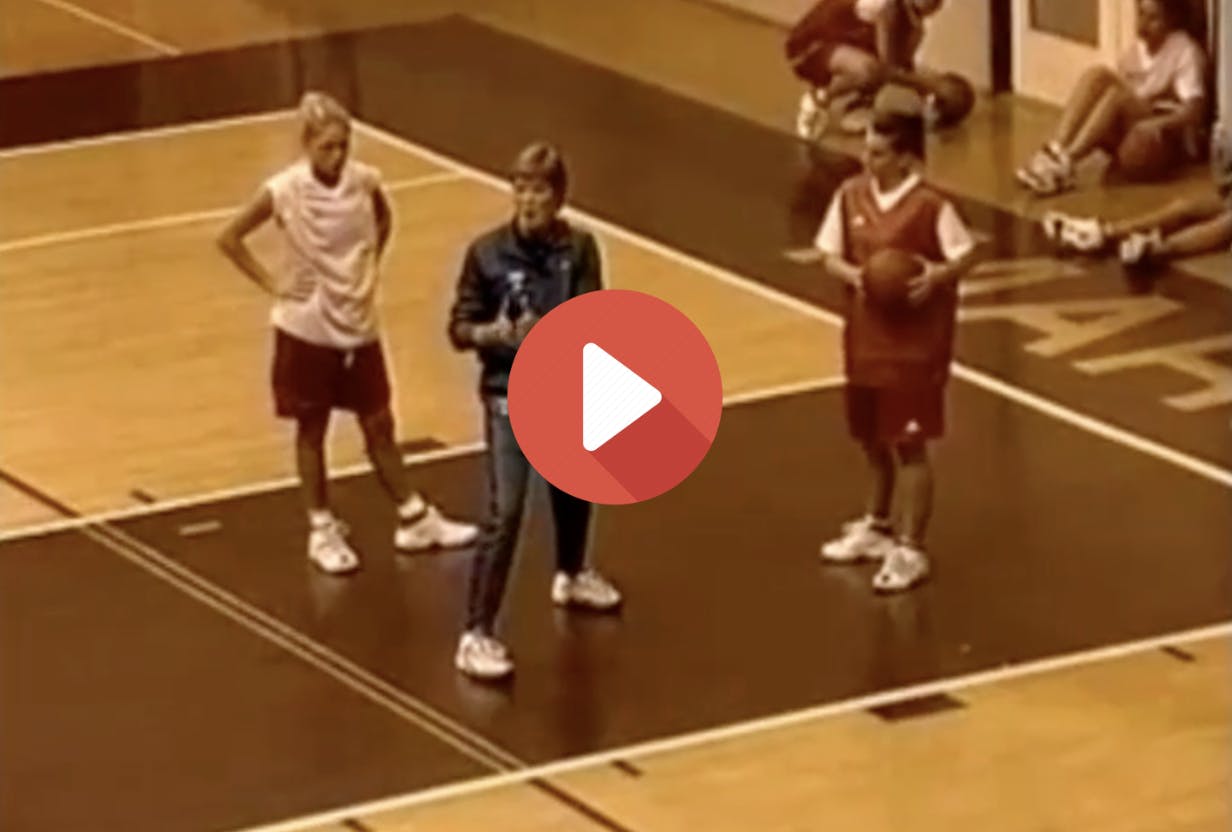
Coach Summitt begins her course by talking about defense. Specifically, how to defend in the backcourt.
She then goes on to say that she likes to have her players defending at an arm’s distance while in the backcourt. And with each step that is made during the act of defending, Coach Summitt explains it as, “step and pull.” What she means by that is, that with each defending step while the player with the ball is dribbling down the court, the back leg should be felt as if it’s getting pulled along.
Coach Summitt explains that the “step and pull” concept runs contrary to the “pivot” technique, which she claims will often make the player reactive, and therefore easy to get beat by the dribbler. But with the “step and pull” technique, the defender is the one leading the dance, so to speak.
She then goes on to say that all coaches must decide the position they’d like to have their defenders' hands. Coach Summitt explains that she wants her players to keep their hands up high (with their “thumbs to the ears”), low hips, and quick feet.
While these defensive backcourt techniques might result in a turnover and an easy basket, Coach Summitt notes that the most important aspect of backcourt defense is that it allows the other defenders in the front court to set the defense up, so that they don’t allow easy transition baskets.
Attacking the Middle of the Floor
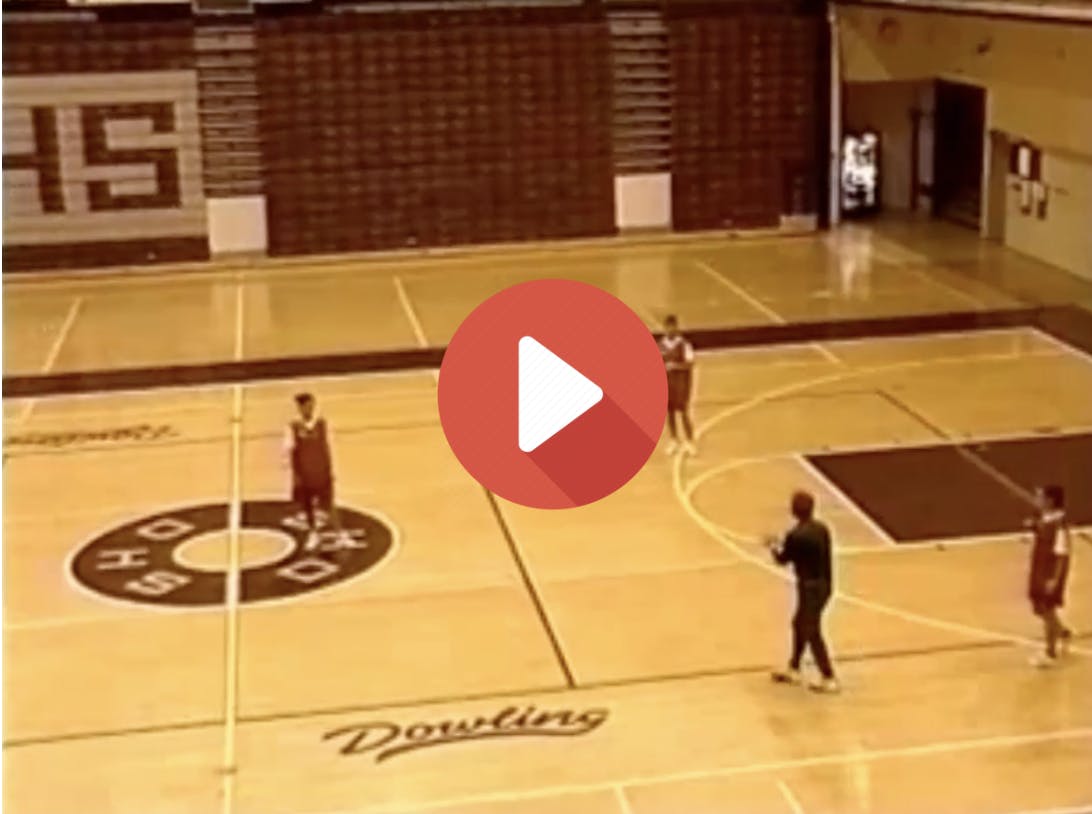
At the foundation of Coach Summitt’s offensive attack is transition. She believes that all good, winning offense stems from playing fast, and getting out on transition as often as possible.
And when the fast break occurs, Coach Summitt stresses that attacking the middle of the floor is paramount.
“Why?” she asks rhetorically. “Because it puts pressure on the defense. And it keeps pressure on the defense.”
Coach Summitt then simulates a situation where a turnover occurs, while her team is on defense. She says that the first guard (who doesn’t have the ball) who can attack the middle of the floor needs to do so. From there, the next guard is “busting it” to the opposite sideline from wherever the turnover occurred. And the first pass that takes place should be to the guard who’s streaking down the court’s middle.
If that pass can’t be made because the defender is occupied, whoever secured the ball after the turnover should begin dribbling hard down the court’s middle. From here, the fast break turns into the iconic three-man weave drill, where the person in the middle of the court will be driving down into the lane with teammates on either side, creating an opportunity to pass to either of them, continue dribbling into the paint or pulling up for a shot.
Change Drill
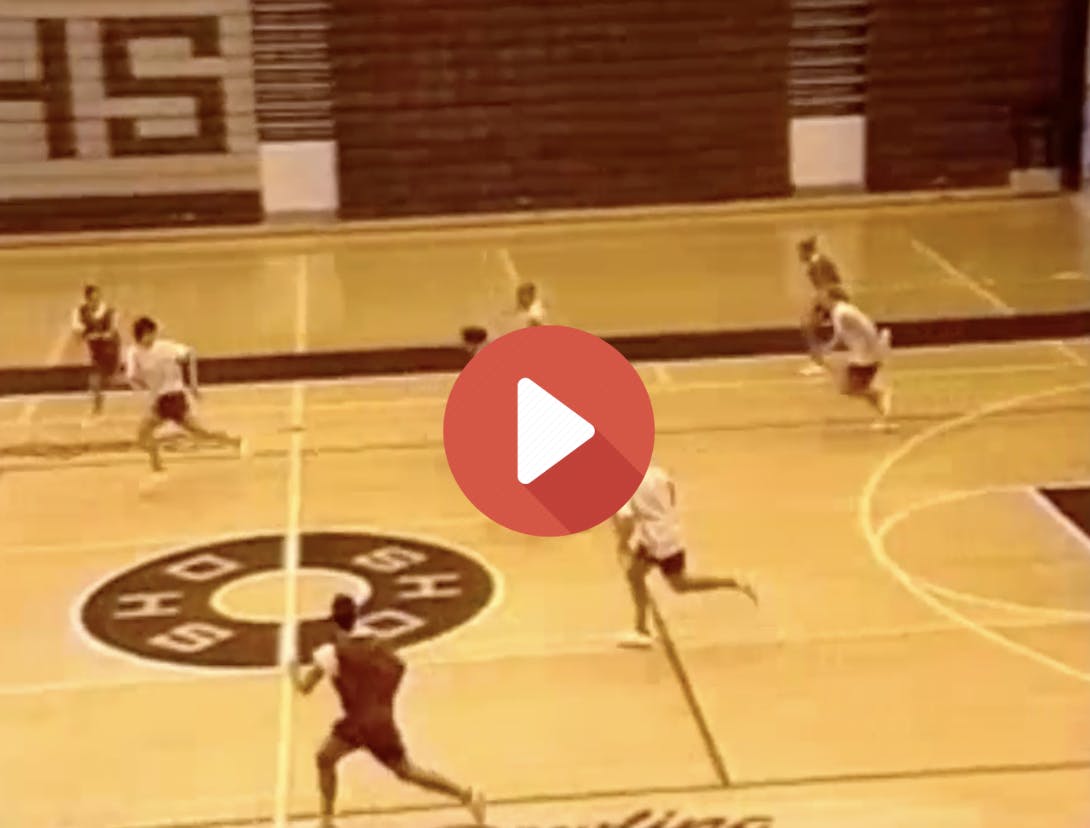
Coach Summitt’s aggressive, fast-paced, offensive-minded coaching style is exemplified by one of her favorite drills to run at practice: the change drill.
The change drill is simple. It starts in the halfcourt, with a typical 5 vs. 5 scenario. The team on offense will be passing the ball back and forth along the perimeter until the coach yells, “change!”. At this, whoever has the ball sets it on the ground, and somebody on the offense picks it up and begins a transition attack. But the important aspect of this drill is that, when the team who started on offense gets into transition defense, they can’t be guarding the same person who was guarding them before the “change!” call occurred.
The reason for this is that it forces the defense to communicate and work together in the chaos that a transition opportunity creates. Practicing drills like these will give players crucial repetitions that will serve them well once the game begins.
Truthfully, all of this wisdom can be used when coaching any basketball team. But because the women’s game is more focused on skills and technique because they can’t rely on the sheer physical size and explosiveness that men possess (at least, as it pertains to the professional game) women are often more fundamentally sound than their male counterparts.
The modern WNBA is an example of that. And as the women’s game continues to grow, with superstars like Angel Reese and Caitlin Clark shining bright, the teachings of Pat Summitt will become even more valuable.

